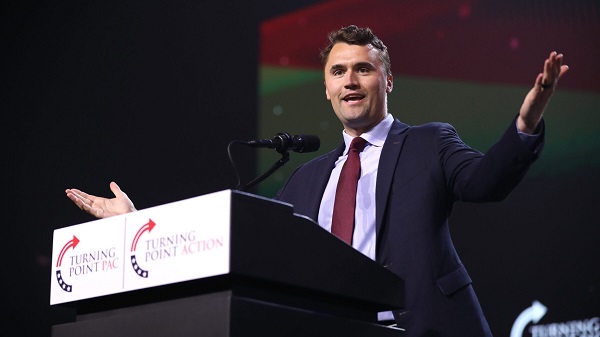Opinion
Female athletes are turning against gender-confused men dominating women’s sports

From LifeSiteNews
If female athletes came together and demanded, with one voice, that female sports be protected, they would be pushing at an open door.
What happens when obvious truths about the differences between the sexes are denied by the elites at the behest of the transgender movement? And what happens when female athletes discover that their rights mean less than the newly invented “rights” of trans-identifying men to invade their spaces?
We’ve seen the answer to that play out over the past few years. This month alone, a trans-identifying male beat his female competitors at an Oregon track meet by a full six seconds, with the video of him zipping across the finish line sparking outrage; a trans-identifying marathon runner announced that he will be competing in the full set of six marathon majors in Boston in the male, female and “non-binary” categories; and courts in West Virginia and Ohio ruled that trans-identifying males can compete on female sports teams.
In the meantime, U.K. culture secretary Lucy Frazer called for a ban on males in female sports after meeting with representatives of a number of female sports leagues, writing:
In competitive sport, biology matters. And where male strength, size and body shape gives athletes an indisputable edge, this should not be ignored. By protecting the female category, they can keep women’s competitive sport safe and fair and keep the dream alive for the young girls who dream of one day being elite sportswomen.
She concluded, “We must get back to giving women a level playing field to compete. We need to give women a sporting chance.” Refreshingly, she called on sporting bodies to take an “unambiguous position” on the matter.
That, of course, is common sense. What makes Frazer’s statements significant is that she does not, like most politicians trying to thread the needle by accepting transgender ideology but rejecting the inevitable conclusions thereof, make multiple references to “transgender women.” She instead refers to keeping male bodies out of female sports, much to the outrage of trans activists, who insist that males who identify as females are females, and thus have female bodies, because they said so.
Over the past several years, it has fallen largely to the few female sportswomen who dared to risk the opprobrium of the LGBT movement to speak for the majority and point out the unfairness of allowing males to invade their sporting domains; now, an increasing number are willing to speak out. A recent study conducted by Manchester Metropolitan and Swansea universities, published April 17 in the Journal of Sports Sciences, indicates that the majority of female athletes want women’s sports to be categorized by sex rather than “gender identity.”
Fifty-eight percent of respondents in the study of elite female athletes wanted categorization by biological sex; that rose to 77 percent among those classified as “world-class athletes” who had competed in Olympic or world championship finals. Researchers surveyed 175 “national, elite and world class female athletes – current and retired – from a range of sports and countries” and included “26 world champions, 22 Olympians and six Paralympians,” making it the largest study of its kind conducted thus far. A BBC Sports study last month found that over 100 elite U.K. female athletes “would be uncomfortable” with trans-identifying males competing in the female categories of their sports.
According to the study, there is one exception to the rule: the “majority of athletes competing in non-Olympic sports believe changing category should be allowed, with the highest rate of 74% among those in ‘precision’ sports such as archery.”
In short, the higher female athletes climb, the more likely they are to object to trans-identifying males competing in their categories. Most of these athletes, of course, remain unnamed. Imagine if they came out together and demanded, with one voice, that female sports be protected. It would constitute a cultural sea change – and I suspect the moment is right for them to do so. If they pushed, they would be pushing at an open door.
Crime
Transgender Roomate of Alleged Charlie Kirk Assassin Cooperating with Investigation


From the Daily Caller News Foundation
The man accused of assassinating Turning Point USA (TPUSA) founder Charlie Kirk reportedly lives with a transgender-identifying “partner,” according to Fox News reporter Brooke Singman.
Authorities have arrested Tyler Robinson, 22, accusing him of gunning down Kirk during a TPUSA “Prove Me Wrong” event at Utah Valley University on Wednesday, during which the late activist was debating attendees on a variety of topics, including transgenderism. Authorities say that communications between Robinson and the biological male who identified as a transgender female confirm Robinson as the person responsible for the assassination of Kirk, Singman posted on X Saturday.
Kirk had engaged in a debate about transgender mass shooters with Hudson Kozak shortly before being assassinated. The subject became a hot-button issue following the Aug. 27 shooting during an all-school mass held at Annunciation Catholic School in Minneapolis that left two children dead.
Dear Readers:
As a nonprofit, we are dependent on the generosity of our readers.
Please consider making a small donation of any amount here.
Thank you!
Authorities had recovered a rifle containing ammunition that was reportedly marked with left-wing messaging, from a wooded area near the site of Kirk’s fatal shooting. The phrases included “Hey fascist! Catch!” and “If you read this you are gay LMAO,” according to Republican Utah Gov. Spencer Cox.
Kirk founded TPUSA, an organization for conservative college and high school students, in June 2012, according to the group’s website. He also hosted “The Charlie Kirk Show,” a podcast that later became a radio show on the Salem Radio Network, according to his biography on TPUSA’s site.
Censorship Industrial Complex
Decision expected soon in case that challenges Alberta’s “safe spaces” law

The Justice Centre for Constitutional Freedoms announces that the Alberta Court of Appeal will soon release its decision in a case challenging whether speaking events can be censored on the basis of potential “psychological harm” to an audience, infringing Charter-protected freedoms of expression (section 2(b) and peaceful assembly (section 2(c).
This case stems from the University of Lethbridge’s January 30, 2023, decision to cancel a speaking event featuring Dr. Frances Widdowson, who has frequently challenged established narratives on Indigenous matters.
In written argument filed in 2024 the University claimed it cancelled the event, in part, because it had obligations under Alberta’s Occupational Health and Safety Act to ensure a workplace free of “harassment” and free of hazards to “psychological and social wellbeing.”
Lawyers argue that these provisions (which might be described as a “safe spaces” law) compel employers to censor lawful expression under threat of fines or imprisonment.
Constitutional lawyer Glenn Blackett said, “Safe spaces provisions are a serious threat to Charter freedoms. Employers who don’t censor ‘unsafe’ speech are liable to be fined or even jailed. This isn’t just the government censoring speech, it is the government requiring citizens to censor one another.”
Given the University’s defence, lawyers asked the Court of King’s Bench of Alberta to allow an amendment to the lawsuit to challenge the constitutionality of the “safe spaces” laws. However, the Court denied the request. According to the Court’s apparent reasoning because the safe spaces law is worded vaguely and generally, it is immune from constitutional challenge.
Mr. Blackett says, “I think the Court got things backwards. If legislation infringes Charter rights in a vague or general way, infringements become impossible to justify – they don’t become Constitution-proof.”
Widdowson and co-litigant Jonah Pickle appealed the ruling to the Alberta Court of Appeal, which heard argument on Monday. A decision from the Court of Appeal is expected soon.
-

 Crime2 days ago
Crime2 days agoArrest made in Charlie Kirk assassination
-

 International2 days ago
International2 days agoBreaking: ‘Catch This Fascist’: Radicalized Utah Suspect Arrested in Charlie Kirk Assassination, Officials Say
-

 Frontier Centre for Public Policy2 days ago
Frontier Centre for Public Policy2 days agoEvery Child Matters, Except When It Comes To Proof In Kamloops
-

 Crime2 days ago
Crime2 days ago“Hey fascist! Catch!”: Authorities confirm writing on alleged Kirk killer’s bullet casings
-

 J.D. Tuccille2 days ago
J.D. Tuccille2 days agoAfter Charlie Kirk’s Murder, Politicians Can Back Away From the Brink, or Make Matters Worse
-

 International2 days ago
International2 days agoCharlie Kirk Shooting Suspect Revealed: Here’s What His Ammunition Said
-

 Daily Caller1 day ago
Daily Caller1 day ago‘You Have No Idea What You Have Unleashed’: Erika Kirk Addresses Supporters For First Time Since Kirk’s Assassination
-

 Crime2 days ago
Crime2 days ago‘Radicalized’ shooter dead, two injured in wake of school shooting







